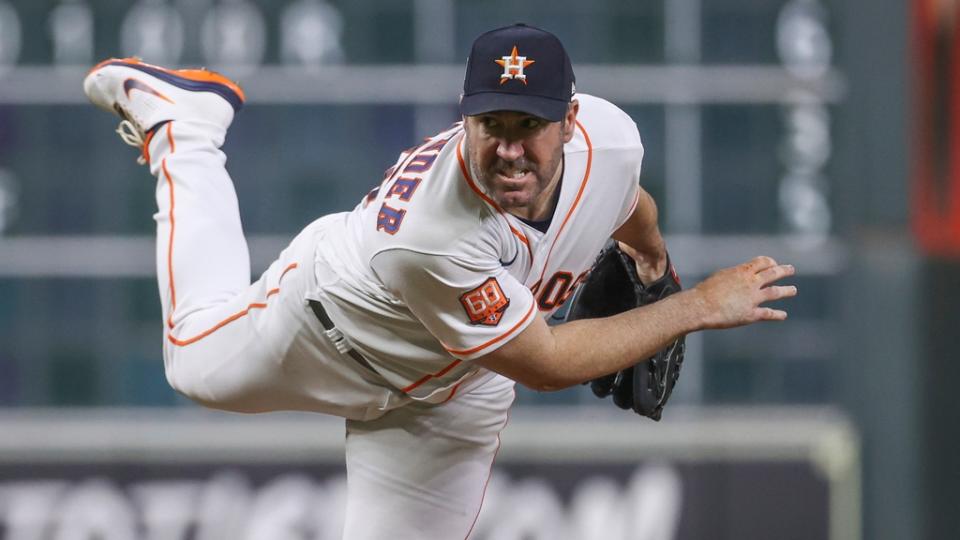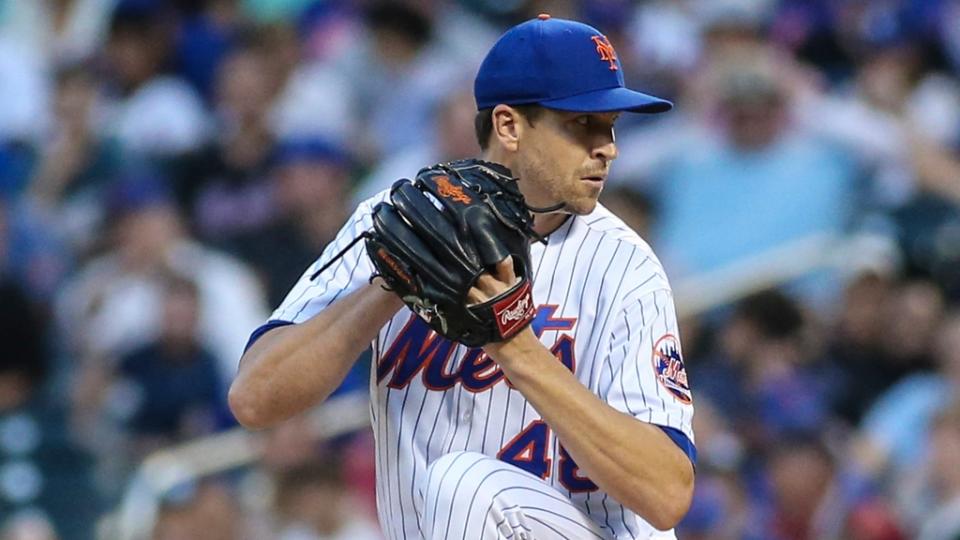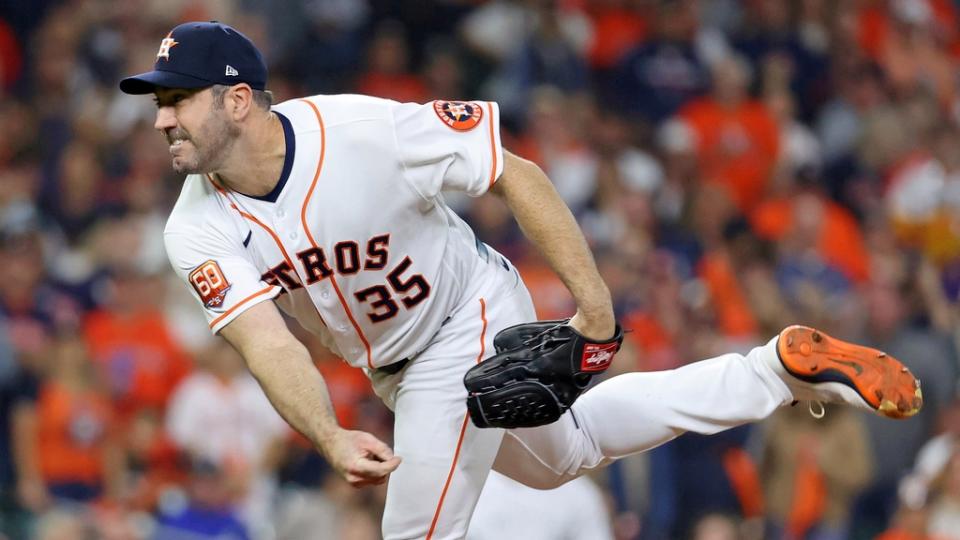
Let’s get this out of the way first…
Justin Verlander is 39 years old. He’ll turn 40 on February 20, just over a month before the 2023 MLB season starts.
The Mets already have Max Scherzerwho will start next season at 38 years old and turn 39 on July 27.
Would it be ideal to have a 40-year-old and a 39-year-old at the top of the Mets’ rotation as they attempt to win a World Series, which would of course require both Verlander and Scherzer pitching deep into October and possibly into November? Perhaps not.
But Verlander isn’t just some other soon-to-be-40-year-old pitcher. He’s one of the best pitchers of the last two decades and is still at the top of his game.
And that’s why we’re about to discuss the pros and cons of the Mets signing him…
CONS
As noted above, Verlander’s age should by no means disqualify him from being considered by the Mets — far from it. But it still has to be discussed.
The main concern for any team should be the overall mileage on Verlander’s arm, which has logged 3,163 innings over 482 starts spanning 17 seasons since he debuted with the Detroit Tigers in 2005.
At some point, Verlander’s age will catch up with him. But in his mind, he is nowhere close to done being a menace on the mound. Back in 2018, Verlander said he was thinking he might pitch until he’s 45. That would be the 2028 season. Is that reasonable? Perhaps not. But all the Mets or any other team should care about is the next season or two.
Verlander had arguably the best season of his career in 2022 (which we’ll get into below), but there were some warning signs late.

The first issue was a calf injury that kept Verlander out of action since Aug. 29 to Sept. 15. That’s relatively minor in the grand scheme of things, but still notable.
Then in the playoffs, with the Houston Astros on their march towards an eventual World Series title, Verlander stumbled twice in four starts. He allowed six runs on 10 hits in four innings in Game 1 of the ALDS against the Seattle Mariners, and then blew a 5-0 lead in Game 1 of the World Series against the Philadelphia Phillies, allowing five runs on six hits in five innings .
But Verlander was dominant in Game 1 of the ALCS against the Yankees (he allowed one run on three hits while walking one and striking out 11 in six innings) and gutted it out in Game 5 of the World Series, allowing one run on four hits while walking four and striking out six in five innings.
Could Verlander’s two postseason clunkers be a sign of his age? Maybe. Or it could have just been a pitcher wearing down at the very end of the season in his first year back from Tommy John surgery, after throwing zero innings in 2021 and just six innings in 2020.
Another issue when it comes to Verlander is the money and years he’ll get — possibly a one-or two-year deal worth around $40 million annually. But if the Mets are willing to pay Jacob deGrom around $35 million or $40 million annually for three years (and all indications are that they are), it stands to reason that they’d be willing to give one or two years to Verlander.
It is at this point that we’ll note that the Mets should obviously only pursue Verlander if they lose deGrom. There is no world where it makes sense for the Mets to have $120 million or so tied up in three aces who are 34 or older. But if deGrom goes, there’s an easy case to be made that Verlander should be at the top of the Mets’ list to replace him.
PROS
Verlander is an ace coming off arguably the best season of his career.
I’ve seen people make the case that the Mets having Verlander atop the rotation with Scherzer would simply be too risky because of their age. But some of those same people would be just fine if the Mets had deGrom atop the rotation again or signed Carlos Rodon instead. And it’s hard to make an argument that Verlander is a bigger injury risk than either of them, despite his age.

Maybe deGrom, who missed the second half of the 2021 season and the first half of the 2022 season — and whose stuff declined as 2022 wore on — is past the many injury issues that have derailed him lately. But maybe he’s not.
As far as Rodon, he has pitched more than 133 innings just twice in his career, and dealt with shoulder issues that impacted the end of his season in 2021 — a year where he tossed 132.2 innings.
It should also be noted that Rodon has had just two elite seasons — and they came after he was mediocre for the first six seasons of his career. Maybe he’s found a way to maintain his dominance and he’ll be the picture of health going forward. But I wouldn’t bet on both of those things being true.
I would rather bet on Verlander, and I kind of already have, since I predicted before the 2022 season that he would win the American League Cy Young award, which will be officially given to him soon.
In 2022, Verlander was almost unbelievably good, leading the league in ERA (1.75), WHIP (0.829), ERA+ (220), and hits per nine (6.0).
Verlander’s stuff in his first year back from TJS was still nasty — his fastball averaged 95.1 mph (it was 94.9 mph before TJS and 95.2 mph back in 2017), and he dialed it up to the high-90s when needed. Meanwhile, his slider, curve, and changeup were right where they’ve always been in terms of average velocity. Verlander’s advanced stats were also incredibly good, so what he did in 2022 was not a mirage.
It’s also fair to argue that Verlander missing most of 2020 and all of 2021 due to TJS could benefit him over the next season or two, since he doesn’t have two seasons of extra mileage on his arm.

Like Scherzer, Verlander is a bulldog on the mound and one of the most intense competitors in baseball. That would play well in New York on a win-now team.
Unlike Rodon, Verlander will not be attached to the one-year qualifying offer. If the Mets sign a player who receives and rejects the QO, they lose their top second-round and fifth-round picks in the 2023 MLB Draft, and lose $1 million of international bonus money. That’s a big deal.
VERDICT
For one, Verlander can likely be had for one or two years while deGrom will probably get three or four and Rodon might get five.
And despite Verlander’s age, calling him a big injury risk is kind of silly. Verlander threw 206 innings in 2017, followed by 214 in 2018, 223 in 2019, and 175 in 2022 in his first season back from TJS.
Could Verlander get hurt again? Sure. But so can any pitcher, regardless of age or arsenal.
If given a choice between deGrom (entering his age-35 season), Verlander, and Rodon (entering his age-30 season), I’d choose deGrom easily. He is simply on another planet. And I’m willing to bet his injuries are mostly behind him.
But if deGrom leaves, I’m of the opinion that the Mets need another ace to replace him. And I think it would be an incredibly easy call to target Verlander over Rodon.